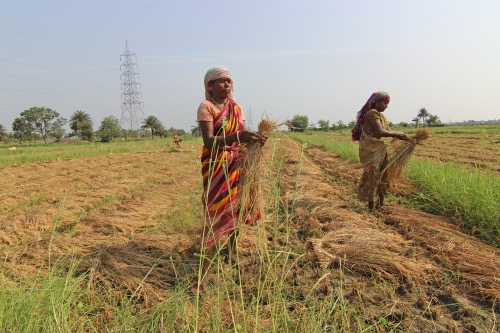Home/content/Agriculture in India: Nourishing a Nation
Agriculture in India: Nourishing a Nation

Agriculture has been the backbone of India's economy for centuries, providing sustenance to a vast population and serving as a source of livelihood for millions. The diverse agro-climatic zones and fertile soil make India an agricultural powerhouse. This article delves into the key aspects of agriculture in India, exploring its significance, challenges, and innovations.
Diversity in Crops and Regions
India is known for its agricultural diversity, with a wide range of crops cultivated across different regions. From rice paddies in the Gangetic plains to wheat fields in the northern states and spice plantations in the south, the country boasts a rich variety of agricultural practices. Each region's unique climate and soil conditions contribute to the cultivation of specific crops, making India a global agricultural hub.
Smallholder Farming and Rural Livelihoods
Smallholder farmers play a crucial role in Indian agriculture, with a majority of the farming community relying on small-scale and subsistence farming. These farmers contribute significantly to the country's food production and are the backbone of rural economies. However, they often face challenges such as limited access to resources, technology, and markets, highlighting the need for targeted support to enhance their livelihoods.
Challenges Faced by Indian Agriculture
Despite its importance, Indian agriculture faces numerous challenges. Issues such as water scarcity, outdated farming practices, land fragmentation, and the impact of climate change pose significant threats to agricultural productivity. Farmers also grapple with market volatility and the need for modernization. Government initiatives and technological interventions are being explored to address these challenges and promote sustainable farming practices.
Government Initiatives and Agricultural Reforms
The Indian government has implemented various initiatives and reforms to boost the agricultural sector. Schemes like Pradhan Mantri Kisan Samman Nidhi (PM-KISAN) aim to provide financial assistance to farmers, while the Agricultural Produce Market Committee (APMC) reforms aim to liberalize agricultural markets, allowing farmers greater flexibility in selling their produce. These efforts are aimed at improving farmers' income and overall agricultural efficiency.
Technological Innovations in Indian Agriculture
The integration of technology in agriculture is transforming the sector in India. From precision farming and digital soil mapping to the use of drones for crop monitoring, technology is enhancing efficiency and productivity. Mobile applications provide farmers with real-time information on weather, market prices, and best agricultural practices, empowering them to make informed decisions.
Conclusion
Agriculture in India is a dynamic and resilient sector that continues to evolve to meet the challenges of a growing population and changing climate. The rich tapestry of crops, the contribution of smallholder farmers, and ongoing government initiatives showcase the vibrancy of Indian agriculture. As the nation strives for sustainable and inclusive growth, the future of Indian agriculture holds promise with a blend of tradition and innovation.